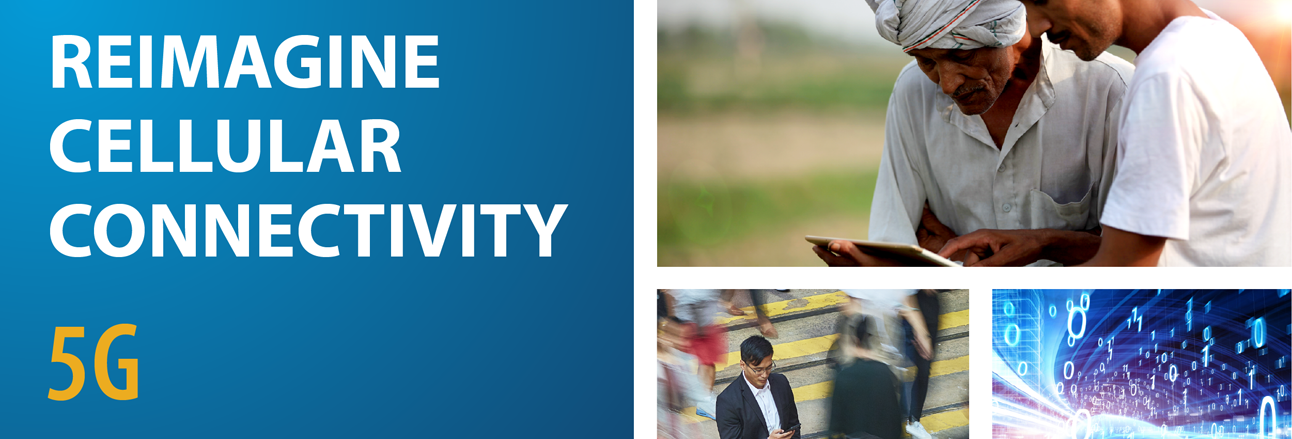Redefining Cellular Connectivity in a 5G World
Cellular backhaul over satellite has long helped mobile network operators expand their service to remote and rural markets. From an initial 2G voice solution to a 4G/LTE data solution, the role of satellite connectivity has changed along with the profile of the mobile end user.
The next stage of evolution concerns 5G, which calls for a total integration of satellite connectivity with the 5G network model. Satellite network architectures are ready for this transition. Already, satellite connectivity works alongside cellular connectivity in hybrid network environments to backhaul cellular traffic to remote locations, to offload traffic on overloaded networks, to provide over-the-top (OTT) and content distribution solutions, and to provide a resilient redundancy solution. In fact, NSR estimates that 5G-differentiated applications — such as 5G backhaul and hybrid networks — will generate close to one-third of net satellite capacity revenue growth in backhaul over the next 10 years. This is due in part to the fact that 5G backhaul capacity demand will consume four to five times the bandwidth of a 4G site, according to NSR.
At iDirect, however, we believe that satellite within the 5G network will be about more than just backhaul — 5G presents new use cases for satellite to break out of its niche, open new markets, and participate in a fully converged, end-to-end network.
New Satellite Use Cases in 5G
A look at the 5G use cases identified by the International Telecommunication Union (ITU) and the 3rd Generation Partnership Project (3GPP) standards reveals where satellite can play an important role. There are several important applications that are very well suited to run over satellite:
Enhanced Mobile Broadband: Mobile operators will rely on satellite to drive the next generation of applications that the cellular industry promises to end users, such as faster speed to handsets and opening up fixed wireless connectivity to replace last mile fiber connections to homes and business. Just like with 3G and 4G networks, satellite will play a critical role in providing connectivity to remote and mobile sites.
This includes:
- 5G to Premises: Satellite will complement terrestrial networks, such as broadband connectivity to a home or office in an underserved area, or to enterprise sites as a backup.
- 5G Fixed Backhaul: Satellite will bring broadband connectivity where it is difficult to deploy terrestrial connections in rural and remote areas across a wide geographic region only or best covered by satellite.
- 5G Mobility Backhaul: Satellite will bring broadband connectivity to remote or user equipment (UE) on the move, such as to airplanes, trains, vehicles or maritime vessels.
Internet of Things (IoT) Networks: 5G will accelerate massive machine-to-machine (M2M) connectivity to support IoT, whether that comprises sensors, surveillance systems or automated teller machines (ATMs). In this 5G use case scenario backhauling from aggregation points is an obvious satellite use case, but the IoT opportunity will also include providing connectivity in remote places, especially with the decreasing size, weight and power of satellite terminals coupled with the emergence of phased-array antenna technologies.
Ultra-reliable and Low-latency Communications (URLLC): While satellite can be considered highly reliable, it will always have an order of magnitude of latency and therefore will not take part in specific ultra-low latency applications, such as providing real-time sensor data for autonomous driving or vehicle-to-everything (V2X) tasks.
However, satellite will be essential to complement these URLLC use cases by pushing out content via multicasting and providing non-critical connectivity to ease congestion.
For example, by multicasting content to millions of vehicles, satellite frees up valuable 5G cellular capacity needed for v-to-x connectivity. In such a case, satellite can be used to distribute software and firmware via over-the-air updates, as well as provide infotainment to passengers inside a vehicle in a cost-effective way. Moving massive amounts of content over multicast networks to hundreds of thousands of places (or in this case, vehicles) at once will continue to be satellite’s strong value proposition.
Satellite will also play a role in providing connectivity from vehicles back to the core network for non-critical information such as maintenance and updates. This use case also applies to automation equipment for construction, mining and agriculture autonomous capabilities where feedback and telematics from these devices are critical.
The Importance of Standardization in the 5G Future
At iDirect, we believe it’s critical for the satellite industry to embrace and influence 5G standards, so we can seamlessly integrate and take part in these 5G use cases.
As we adopt new 3GPP standards and releases defining 5G, we predict satellite network deployments will become easier and more cost effective. Service providers will no longer have to maintain separate networks, but rather will be able to integrate with the Software Defined Network (SDN), Network Function Virtualization (NFV) and orchestration frameworks, which the cellular and terrestrial industries are already adopting.
iDirect is involved in multi-level efforts and participates in numerous 5G standard organizations and industry consortiums that have led to a series of live demonstrations showcasing the successful integration of 5G over satellite at #FUSECO, #Mobile World Congress and last week at EuCNC.
The bottom line is that iDirect is well positioned to provide mobile network operators with a platform that extends anywhere in the world; supports 2G, 3G and 4G/LTE backhaul scenarios; and will be forward compatible with 5G standards, ready to enable partners to take part in new use cases and opening up new opportunities arising from 5G.
Read The 5G Future and Role of Satellite White Paper to learn more about the opportunity for satellite in a 5G world.
